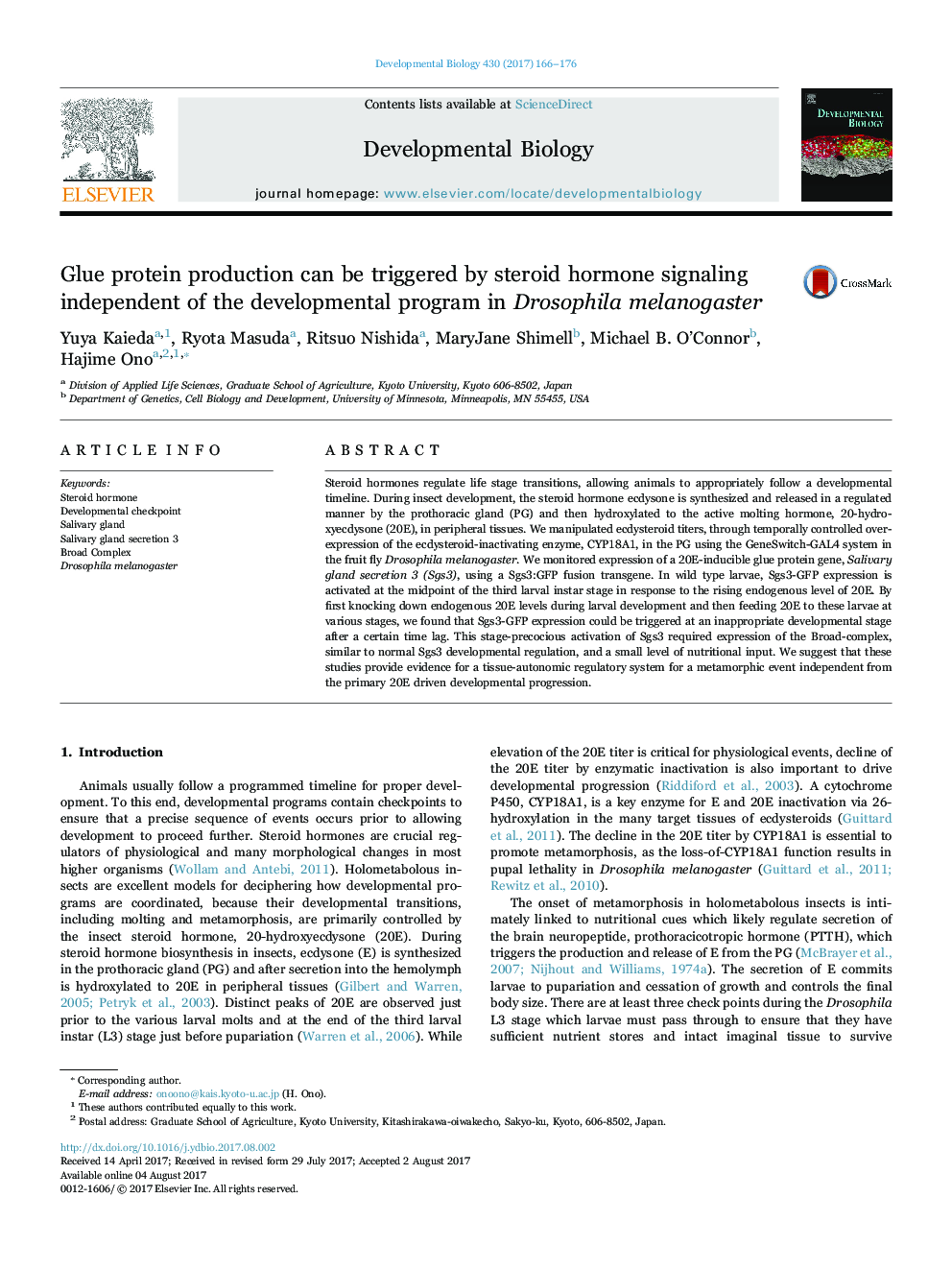| Article ID | Journal | Published Year | Pages | File Type |
|---|---|---|---|---|
| 5531825 | Developmental Biology | 2017 | 11 Pages |
â¢Sgs3 expression could be triggered even in an aberrant developmental timeline.â¢Stage-aberrant induction of Sgs3 requires a time lag after administration of 20E.â¢Br-C expression mediates the ectopic Sgs3 induction.â¢Sgs3 expression requires a small amount of nutrition during the early L2 stage.â¢A developmental deadline to respond to ecdysteroids occurs at the middle L2 stage.
Steroid hormones regulate life stage transitions, allowing animals to appropriately follow a developmental timeline. During insect development, the steroid hormone ecdysone is synthesized and released in a regulated manner by the prothoracic gland (PG) and then hydroxylated to the active molting hormone, 20-hydroxyecdysone (20E), in peripheral tissues. We manipulated ecdysteroid titers, through temporally controlled over-expression of the ecdysteroid-inactivating enzyme, CYP18A1, in the PG using the GeneSwitch-GAL4 system in the fruit fly Drosophila melanogaster. We monitored expression of a 20E-inducible glue protein gene, Salivary gland secretion 3 (Sgs3), using a Sgs3:GFP fusion transgene. In wild type larvae, Sgs3-GFP expression is activated at the midpoint of the third larval instar stage in response to the rising endogenous level of 20E. By first knocking down endogenous 20E levels during larval development and then feeding 20E to these larvae at various stages, we found that Sgs3-GFP expression could be triggered at an inappropriate developmental stage after a certain time lag. This stage-precocious activation of Sgs3 required expression of the Broad-complex, similar to normal Sgs3 developmental regulation, and a small level of nutritional input. We suggest that these studies provide evidence for a tissue-autonomic regulatory system for a metamorphic event independent from the primary 20E driven developmental progression.
